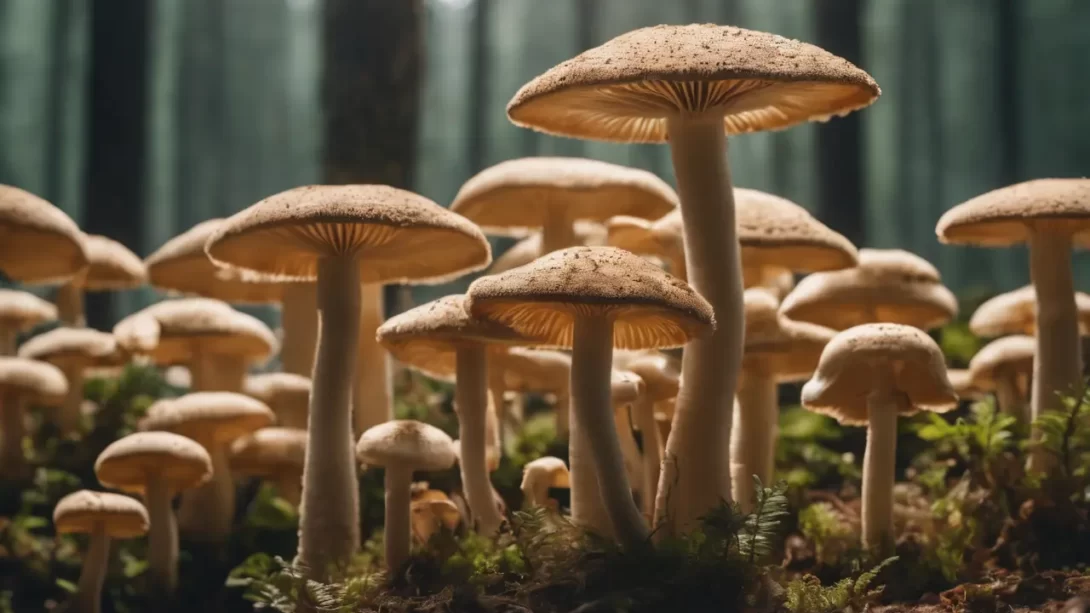Mushroom cultivation is a fascinating aspect of home gardening that diverges significantly from traditional plant growing. Unlike most plants that gardeners are familiar with, mushrooms are fungi, a kingdom entirely separate from plants. This fundamental difference means that the conditions required for growing mushrooms vary greatly from those needed for plant cultivation. For those intrigued by the unique world of fungi, understanding the specific needs of mushroom cultivation is key to successful growth.
Mushrooms: Biology and Growth Requirements
Mushrooms, being fungi, have a distinctive biology and lifecycle compared to plants. They don’t photosynthesize; instead, they absorb nutrients from their growing medium, often a substrate like wood, straw, or compost. The basic requirements for mushroom growth include a suitable substrate, adequate moisture, appropriate temperature ranges, and sufficient air exchange. Unlike plants, mushrooms do not rely on light for energy, but the role of light in mushroom cultivation is often misunderstood and merits closer examination.
The Role of Light in Mushroom Growth
A common query among new mushroom cultivators is whether mushrooms require light to grow. This question stems from the fundamental differences in how mushrooms and plants develop. Plants rely on light for photosynthesis, converting light energy into chemical energy. Mushrooms, however, absorb their nutrients directly from their substrate. Consequently, they don’t need light in the same way plants do for their growth. However, light does play a role in mushroom cultivation, which varies depending on the mushroom species and can influence several aspects of their development.
Light Requirements for Different Mushroom Varieties
Different mushroom species have varying light requirements, which can influence their cultivation practices. For instance, common varieties like the button mushroom (Agaricus bisporus) have minimal light needs and can grow in almost complete darkness. In contrast, species like oyster mushrooms (Pleurotus ostreatus) and shiitake mushrooms (Lentinula edodes) benefit from some exposure to light. This light exposure doesn’t need to be intense; indirect sunlight or even artificial light sources can suffice. Understanding these specific light requirements is crucial for optimizing the growth and yield of each mushroom variety.
The Impact of Light on Mushroom Development
While mushrooms don’t use light for energy, it does impact their growth in several ways. Light influences the direction of growth, with mushrooms typically growing towards a light source. This directional growth ensures that the spores, which are released from the cap, are exposed to air currents for wider dispersion. Additionally, light exposure can affect the physical characteristics of the mushroom. It can influence the size of the cap and the length of the stem, with some mushrooms developing larger caps and shorter stems when exposed to light. The quality of light, including intensity and spectrum, can also play a role in the development of certain mushroom characteristics, such as color and texture.
Cultivating Mushrooms in Controlled Environments
Growing mushrooms in controlled environments, like indoors or in specialized structures, gives cultivators the ability to manage light exposure effectively. For indoor cultivation, understanding the specific light needs of your mushroom variety is key. Artificial lighting, such as LED or fluorescent lights, can be used to provide the necessary light exposure. These light sources are especially useful for varieties that require more light, as they offer consistent and controllable illumination. It’s important to balance light exposure with other environmental factors like humidity, temperature, and ventilation, all of which contribute to the successful cultivation of mushrooms.
Conclusion: Best Practices for Mushroom Cultivation
In concluding, while light is not essential for the energy needs of mushrooms, it does play a role in their overall growth and development. The necessity and impact of light vary depending on the mushroom species being cultivated. For mushrooms like the button mushroom, light is a minimal concern, whereas for oyster and shiitake mushrooms, providing some light can be beneficial.
When cultivating mushrooms, especially in controlled environments, it’s important to balance light exposure with other critical factors such as substrate quality, humidity, temperature, and air circulation. Each of these elements plays a vital role in the health and productivity of mushroom crops.
For those embarking on the journey of mushroom growing, understanding these requirements is just the beginning. Mushroom cultivation offers a unique and rewarding gardening experience, differing significantly from traditional plant gardening. It invites cultivators to delve into the fascinating world of fungi, learning and adapting as they go.
Experimentation and observation are key in mushroom cultivation. As you gain experience, you’ll learn the nuances of how different environmental factors, including light, influence the growth of your mushrooms. Whether you’re growing mushrooms for culinary purposes, as a hobby, or for educational reasons, the process can be incredibly fulfilling. Remember, successful mushroom cultivation is a blend of science, patience, and a willingness to learn from each crop. With the right approach, you can enjoy bountiful harvests of these fascinating and delicious fungi.



